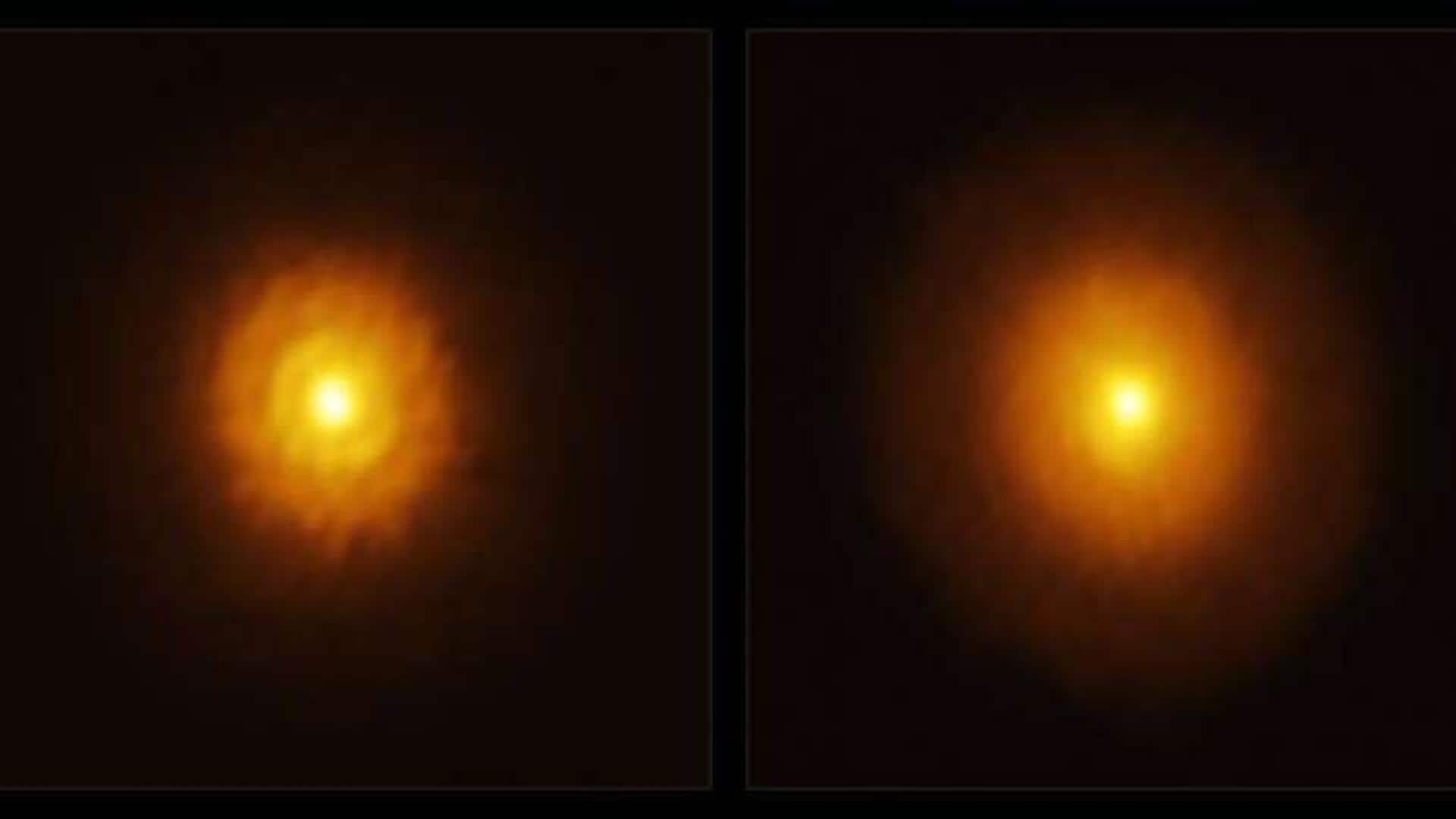
Watch: This exoplanet is 10 times larger than Jupiter
What's the story
A team of astronomers has discovered a massive exoplanet, three to 10 times the mass of Jupiter, lurking in the gas and dust "fog" surrounding a young star. The star, known as MP Mus, was previously thought to be alone in a featureless cloud. However, new observations from the Atacama Large Millimeter/submillimeter Array (ALMA) and the European Space Agency's (ESA) Gaia mission have revealed otherwise.
Planet formation
A look at the discovery
The international team, led by the University of Cambridge, found a massive gas giant in the star's protoplanetary disk. This is the first time an exoplanet within such a disk has been indirectly discovered by combining Gaia data with observations from ALMA. The discovery was published in Nature Astronomy and suggests that similar techniques could be used to find young planets around other stars.
Solar system
Why studying planet formation is important
Studying planet formation in protoplanetary disks can provide insights into the evolution of our own solar system. The process involves gravity pulling particles together to form larger solid bodies such as asteroids or planets. As these young planets form, they create gaps in the disk, similar to grooves on a vinyl record. However, observing these young planets is extremely challenging due to interference from gas and dust in the disk.
Disk observation
How the team made the discovery
In 2023, the scientists used ALMA to observe the protoplanetary disk around MP Mus (PDS 66). The initial results found a young star seemingly all alone in the universe with no gaps where planets might be forming. However, this seemed odd since disks of that age usually show some evidence of planet formation. So, the team re-observed MP Mus using ALMA at a longer wavelength to probe deeper into the disk.
Detection
What the new observations revealed
The new observations revealed a cavity close to the star and two gaps further out, indicating that MP Mus might not be alone after all. Simultaneously, Miguel Vioque from the European Southern Observatory found that MP Mus was "wobbling." This discovery led them to believe that a gas giant—less than 10 times Jupiter's mass—might be orbiting the star at a distance between one and three times Earth's distance from the Sun.